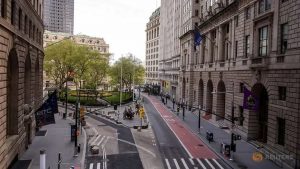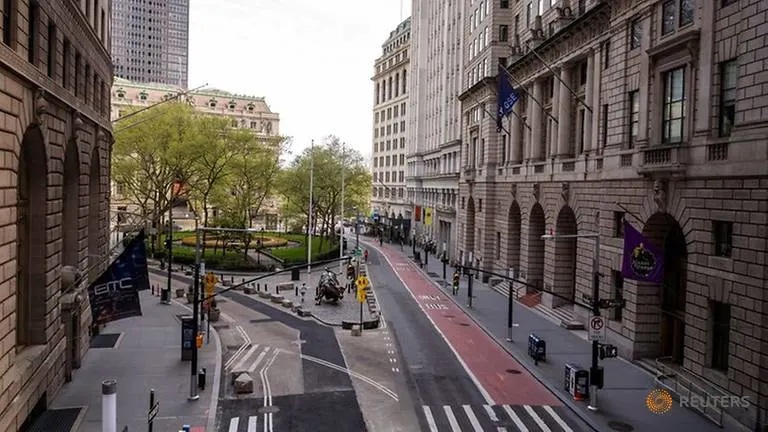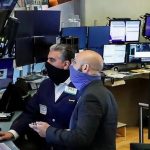The Trump administration on Monday released the names of hundreds of thousands of businesses which took money from a high-profile US$660 billion pandemic aid program, letting the public see for the first time how the majority of the cash was spent and whether it helped save jobs.

FILE PHOTO: A woman runs past the Charging Bull sculpture in the Financial District as streets remain less busy due to the continuing outbreak of the coronavirus disease (COVID-19) in the Manhattan borough of New York U.S., May 5, 2020 at 6:42PM.
WASHINGTON: The Trump administration on Monday released the names of hundreds of thousands of businesses which took money from a high-profile US$660 billion pandemic aid program, letting the public see for the first time how the majority of the cash was spent and whether it helped save jobs.
The U.S. Treasury and Small Business Administration (SBA) said the US$521.4 billion approved so far has supported employers of some 51.1 million jobs, or 84per cent of all small business employees.
The colossal data set on the Paycheck Protection Program, released by the Trump administration after some initial resistance, provides transparency for the first-come-first-served program that has been dogged by technology, paperwork and fairness issues.
The data could make life uncomfortable for borrowers that broke the spirit or letter of the rules of the program, the aim of which was to help cash-strapped companies keep workers employed, and for banks that shoveled the money out the door.
The Treasury and SBA released data for more than half a million loans of US$150,000 or more, including recipient name, address, business type, jobs supported, and some demographic information. That accounts for roughly 73per cent of the dollars granted, but only 14per cent of the 4.9 million loans, SBA data through June 30 shows.
While the data does not say exactly how much money each borrower received, it places them in a band of varying loan ranges.
Loans were capped at US$10 million, although the average loan size was US$107,000, the data shows. The Treasury also released aggregate data on loans below US$150,000 but did not name the recipients.
The funds reached a wide swath of recipients – more than US$67 billion for the healthcare and social assistance sector, US$64 billion-plus for construction businesses, US$54 billion for manufacturing and, at the smaller end, more than US$7 billion for religious organizations.
Treasury Secretary Steven Mnuchin had initially refused to name any recipients, saying it could expose borrowers’ proprietary business information, particularly if they are sole proprietors and independent contractors. Under pressure from lawmakers, he agreed to shine a light on large borrowers.
Launched in April, the unprecedented program allows small businesses hurt by the pandemic to apply for a forgivable government-backed loan from a bank.
In the scramble to distribute funds, it was beset by technology glitches, documentation snags and revelations that some banks prioritized their most profitable clients, leading to some affluent companies receiving funds while less well-heeled borrowers missed out.
There have been lingering questions over whether the most needy benefited.



